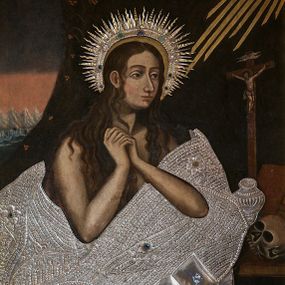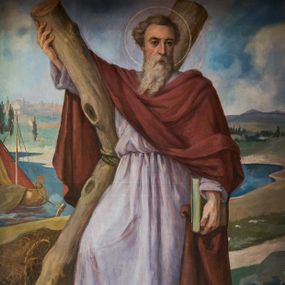
Zalas
Elaboration author
Emilia Karpacz
Monuments
Parishes
History abstract
In the first decades of the 14th century, representatives of the Starżów-Toporczyk family, headed by the voivode of Sandomierz – Nawoj of Morawica – conducted a lively settlement campaign on their estates, to the west of the family nest. Before 1321, the village of Zalas was founded on a newly cleared glade, at a close distance from a source of the Sanka River. In 1321, sołectwo (an administrative unit in Poland, a subdivision of a commune – translator's note) was established in Zalas. The owner of the village was Wierzchosława, Sieciech's daughter, a representative of the Toporczyk's family line called Krzywosądowice (they were descended from Krzywosąd, a castellan living in the 12th century). There are many indications that the senior of the family, Nawój of Morawica, who may have even owned a part of Zalas, could also have been involved in the founding of the village. On May 29, 1325 in Poznań, King Władysław the Elbow-high issued a document in which he approved the purchase of the Zalas village from Wierzchosława by her cousin, the starost of Greater Poland, Krzywosąd Śmiłowica. Between 1326 and 1335, the parish was founded in Zalas. In 1402, half of the village belonged to the descendant of Nawoj of Morawica, the castellan of Cracow, Jan of Tenczyn, and the rest of the village belonged to the descendants of Krzywosąd Śmiłowica. The last member of this family line, Andrzej Krzywosądowic, had only a daughter, who brought Zalas as a dowry to the Wielogłowski family. In 1460, Jan Tęczyński, the grandson of the castellan, bought out half of the village from them. Since then, Zalas was entirely owned by the Tęczyński family, becoming part of an extensive latifundium, often referred to as the "County of Tenczyński" a few centuries later. Jan Magnus Tęczyński, the last representative of the family, died in 1637. His only daughter, Izabela, brought the estates to her husband, Łukasz Opaliński, as a dowry. When the son of Łukasz and Izabela – Łukasz Stanisław – died childless, the estates passed into the hands of his niece, Helena Elżbieta née Lubomirska, the wife of the voivode of Cracow, Adam Mikołaj Sieniawski. The Sieniawski family remained the owners of Zalas until 1731, when Maria Zofia Sieniawska brought the entire estate to the Czartoryski family as a dowry. Her daughter Izabela, in turn, married the Grand Marshal of the Crown – Stanislaw Lubomirski. In Zalas, since the Middle Ages, clay of excellent quality was mined – the village enjoyed the status of an important pottery centre from the first centuries of its existence. In the first half of the 19th century, 50 pottery masters were active here. In 1806, the village was taken over by the grandson of Princess Izabela, Artur Potocki. The estates remained in the hands of this family until the World War II. In the second half of the 19th century, there was the economic downturn in pottery. The inhabitants of Zalas found employment in the Barach quarry, opened by the Potocki family. From the second half of a century of steam until today, stonemasonry has been developing in the village (particularly the mining of diabase and porphyry), shaping both the landscape of Zalas and the life economic conditions of a large part of the inhabitants.
How to cite?
Emilia Karpacz, "Zalas", [in:] "The Sacred Lesser Poland Heritage", 2026, source: https://sdm.upjp2.edu.pl/en/places/zalas-1


